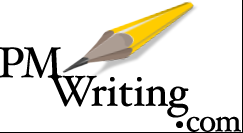Your speech should end with a bang, not a whimper…unless you plan to whisper for dramatic effect.
Your last few words are your chance to make your point, persuade your audience or have an impact. Don’t leave your conclusion to chance. Write out and rehearse your ending separately so that you won’t waste an opportunity that only comes once. You want your delivery, emphasis and timing to drive home your point and feel completely natural.
Here are some questions to help you develop a conclusion that will be powerful or will give your audience that ah-ha moment of recognition they enjoy when a speaker connects with them.
What is the key message?
You want your conclusion to reflect the point you are trying to get across whether it is the need to support a certain program, the affirmation that a person is truly wise, funny or remarkable, or made a difference to others.
Does your conclusion relate to your introduction?
Well organized speeches often use an expression, anecdote or quote that ties different parts of the message together. As you are developing your speech, look for the story that illustrates your point. It may be a childhood fable, an experience with the person or company, or story that is part of the legacy of your organization. When you find the story or quote that holds your message together, be sure you refer to it in your conclusion.
How do you want listeners to feel?
Should they be upbeat, inspired, laughing or reflective?
Your speech should build up to the feeling you want to leave them with. Even though you may mix humor with serious points, your conclusion sets the emotion they will take away. Think about your personal style and how you can best connect with others and develop a conclusion that capitalizes on your strengths as a speaker.
A few other points about conclusions
- When you have finished, stop talking.
Nothing is more useless or annoying that the obvious statement, “This concludes my presentation.” Rambling on without a clear ending makes your audience wonder if you will ever finish. Practice your final sentence. Say it, put a period on it at the end and then hush. - Remember the power of the pause. After a few seconds of silence, say “Thank you.” In business situations, you may want to take questions and answers. Then move on to the next item on the agenda.
- Think about your body language. Stand still for a few seconds after you have finished, then take a few steps. If there is a master of ceremonies, stand in front of the audience until that person comes and shakes your hand.
- Never leave a podium unattended. (That’s a core principle in Toastmasters.)
Smile and look at people around the room so that you can see how much they will enjoy the grand finale of your speech. If you’ve practiced enough to master your timing and have connected parts of your speech so that all contribute to your conclusion, you’ll end your speech with oomph.
